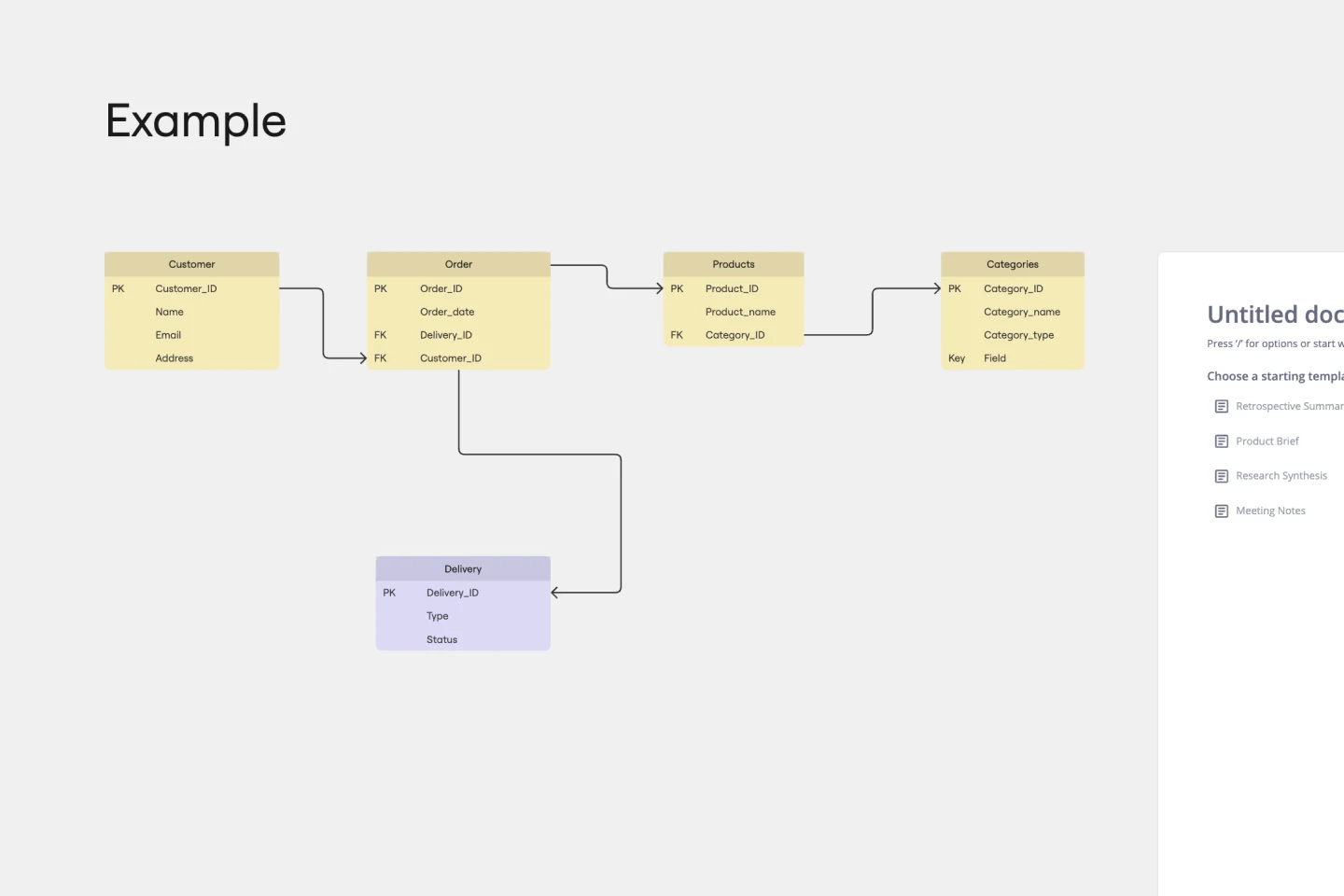About the Entity–Relationship Diagram (ERD) HR Management System Template
The Entity–Relationship Diagram (ERD) HR Management System template is a tool designed to streamline the organization's visualization and management of employee-related information and processes. This template allows users to create a detailed map of how employees are interconnected within various departments, their positions, attendance records, payroll details, and performance reviews. By providing a clear overview of these relationships, the ERD HR Management System template aids in optimizing HR operations, enhancing human resources management, and facilitating strategic planning and decision-making.
How to use the Entity–Relationship Diagram (ERD) HR Management System Template
Customize your diagram: Once the template is open in Miro, you can start customizing it to fit your organization's specific needs. Add entities such as departments, positions, and employees. You can also define the relationships between these entities, such as which department an employee belongs to or what position they hold.
Add attributes: For each entity, you can add attributes like employee ID, name, role, salary, and performance metrics. This will enrich your diagram and provide a more comprehensive view of your HR system.
Collaborate and share: Invite team members to collaborate on the diagram in real time. Miro's collaborative features allow you to discuss, edit, and refine the ERD together, ensuring that all stakeholders have input into the HR management system's design.
Export and present: Once your ERD is complete, you can easily export it to various formats or present it directly within Miro to stakeholders. This facilitates communication and alignment across the organization.
Why use the Entity–Relationship Diagram (ERD) HR Management System Template
Using the ERD HR Management System template in Miro offers several benefits:
Clarity and insight: It provides a clear visual representation of complex HR systems, making it easier to understand relationships and processes.
Efficiency: Streamlines the process of documenting and managing HR-related information, saving time and reducing errors.
Collaboration: Enhances teamwork by allowing multiple users to work on the diagram simultaneously, share insights, and make decisions together.
Flexibility and customization: The template is highly customizable, allowing you to tailor it to the specific needs of your organization. Whether you're a small startup or a large enterprise, you can adjust the ERD to reflect the unique structure and processes of your HR system.
Strategic Planning: With a comprehensive view of the HR management system, organizations can better plan for future needs, identify areas for improvement, and make informed decisions about resource allocation and organizational development.
Compliance and Security: The template can help ensure that your HR system complies with relevant laws and regulations by clearly mapping out data flows and access controls. This is crucial for protecting sensitive employee information and avoiding legal issues.
The Entity-Relationship Diagram (HR) Management System template in Miro is an essential tool for any organization seeking to streamline its HR operations. Its clarity, efficiency, collaborative features, flexibility, and strategic planning capabilities make it indispensable for HR professionals and organizational leaders. By using this template, you can establish a well-organized, compliant, and effective HR management system that aligns with your organization's goals and needs.


